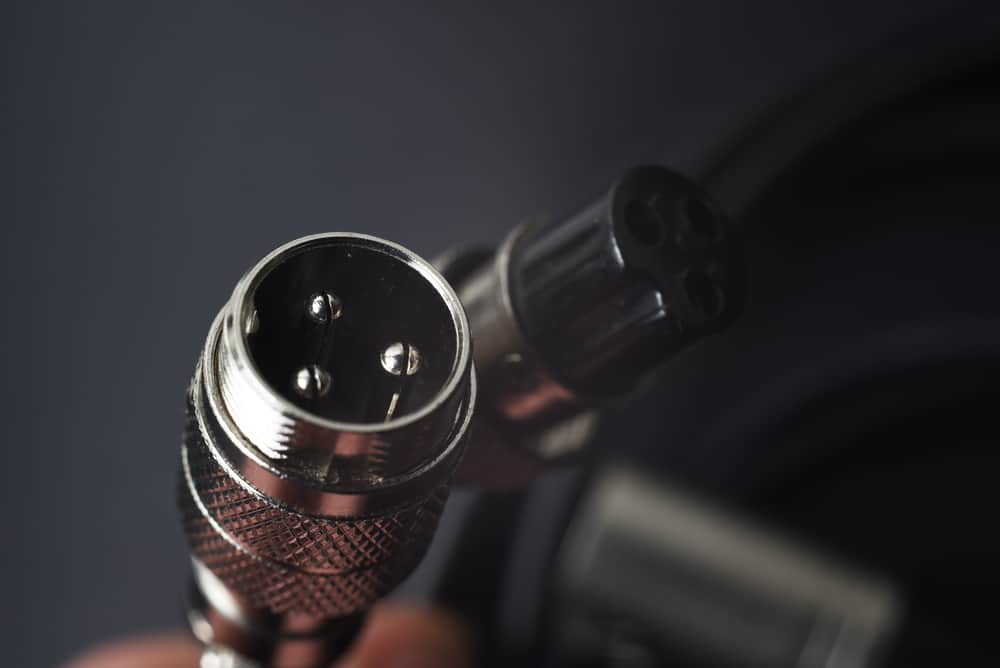
Using XLR cables in a live or studio application is the best possible way to achieve louder, cleaner audio with less noise and interference, if any. However, does this apply to all XLR cables, and does audio equipment have a say in the signal it sends? Let’s find out.
All XLR cables are designed to carry a balanced signal because of the three-pin (conductor) system they are made of. However, whether it is balanced or unbalanced, a cable will not dictate what the signal is. The audio equipment in use will be responsible for that. Thus an XLR cable in some cases can also carry an unbalanced signal.
This article will detail the difference between a balanced and unbalanced cable, and then it will take a look at if all XLR cables are balanced. We will also take a look at other balanced and unbalanced cables and decide what is best for live and studio applications. Lastly, we will give you a solution for creating an unbalanced signal into a balanced one.
Understanding balanced vs. unbalanced cables
Let’s first understand exactly what the difference is between a balanced and unbalanced cable, and with that, we will be able to understand if all XLR cables are balanced.
There are two types of connection formats that are used in studio and live audio applications. These are balanced and unbalanced, and the two are quite different, to say the least.
Unbalanced connections use two conductors, a positive or hot wire and a negative that also carries ground. In many cases, that ground will be a shield that wraps around the hot conductor and protects it from radio frequencies and electromagnetic noise that can enter the cable.
Examples of unbalanced connections include guitar, bass, and other instrument cables. These are typically your 1/4 inch jack cables. Not to be forgotten are other audio connection cables that will also be unbalanced, such as RCA connections and speaker wire. Unbalanced cables may carry low-level instrument signals as well as -10dBV line-level signals. These types of cables used to be known to give consumer or semi-pro audio levels; however, these terms are pretty much obsolete in today’s world. Additionally, it is true that most pro-level gear (equipment) uses balanced connections and +4dB levels, which we will discuss next.
A balanced connection (XLR) uses three conductors. A hot (also known as the positive), a negative, and the ground, which is again often the shield of the cable. Unlike an unbalanced connection, no signal will be carried by the ground. The audio signal for these cables is carried along both the positive and negative conductors. The audio signals on the positive and negative conductors are summed together at the end of the receiving device (your audio equipment).
You need to know that the negative signal carrying the audio is inverted, and when the two signals are added together, they complement each other increase the level by 3dB. Furthermore, it is important to note that any noise picked up by both the positive and negative conductors will be identical. When the negative signal is inverted, and the two signals are summed together, the noise will be canceled out. The two signals are identical and are 180 degrees out of polarity resulting in 100 percent noise cancellation. This effectively reduces the amount of noise in a balanced connection.
This process is commonly known as “common mode rejection” because two or more signals that are picked up in common by the two or more conductors (in our case, noise) will be fully canceled out. Watch this video by Goe Glider explaining balanced and unbalanced connections.
Are all XLR cables balanced?
A balanced connection, as you most probably know, is often carried over XLR cables. This is because XLR cables have the setup of a positive, negative, and ground conductor.
However, it is important to note that technically nothing about a cable makes it balanced or unbalanced, even with the knowledge of how balanced and unbalanced works. The device that is sending and receiving the signals dictates what type of signal it will be sending.
This means you can technically have an XLR cable that carries an unbalanced signal, although all XLR cables are made to carry balanced signals. For example, equipment such as mixers and bass amps have an unbalanced input and output in XLR format. You can even run unbalanced signals to balanced inputs.
Can I use any XLR cable then?
It is important to understand just like with anything else, you get varying degrees of quality, and there is no exception to XLR cables. Even though they are all designed to be balanced cables, the quality of the cables will vary, and it is in your best interest, whether for live or studio applications, that you use XLR cables of the highest quality. This goes for any cables that you use.
There is nothing worse than have thousands of dollars worth of equipment to achieve top audio quality, only to have $5 cables ruin everything.
Check out these quality XLR cables on Amazon.

Are all instrument cables (1/4 inch jack cables) unbalanced?
The short answer is no; you get some 1/4 inch jack cables known as TRS that provide a balanced connection. Typically a normal instrument cable (jack cable) will have, as we said, a positive and a negative that carries the ground. These jack cables are also known as TS cables (tip and sleeve cables).
You will tell these connection types by having two distinctive rings on the ends of the connection points. These will be your unbalanced instrument cables.
TRS jack cables (Tip, Ring, and Sleeve) cables will be the balanced counterpart of the unbalanced jack cables and will look almost identical in fashion to the unbalanced cables. However, there will be a noticeable difference in the connection points because balanced instrument cables will sport three rings around the connection points instead of two. As we stated, no matter what cables you use (because in some instances, you will have to use unbalanced cables), make sure that the cable quality is top-notch.
Check out these unbalanced high quality instrument cables on Amazon.
Check out these balanced high quality instrument cables on Amazon.
Why should you use balanced XLR cables?
If it is not clear by now, you should always opt to use balanced cables in a studio or live application because they give you a better audio signal. That is, the audio signal is louder and is noise-free for the most part.
Trying to record, mix and master audio with low-level signals with a lot of noise and interference can be a task that even the most experienced sound engineers and music producers cannot manage.
What if my equipment has an unbalanced signal?
There are workarounds that you can implement to achieve a balanced signal. In most cases, a DI box (Direct Injection Box) is used to convert an unbalanced signal to a balanced one. This little piece of audio equipment will take whatever unbalanced signal you have, either XLR, TS, or TRS, and convert it for you without any hassle.
Most cases of a DI box are used in a bass application where the bass really needs a balanced signal, and nothing else will do. The inputs of a DI box can vary depending on the make and model you purchase. Although the inputs may vary the output of a DI box will always come in the form of an XLR connection point. Watch this video that explains exactly what a DI box does.
Conclusion
We discovered that indeed all XLR cables are designed and made to carry a balanced signal. This is different from their instrument cables that are able to carry a low-level instrument cable. However, we also discovered that even though XLR cables are designed to carry a balanced signal, the equipment sending and receiving the signal will determine if that signal will be balanced or not.
If you find yourself running an unbalanced signal and want to achieve a balanced one, the workaround is to use an XLR cable connected to a DI box. In all instances of all audio applications, whether for live or for studio purposes, it is always best to utilize top-quality cables with a balanced signal where possible.
Read this article to find out how far you can run XLR cables without any performance problems.
Source list
Music Studio Essentials: Understanding Balanced VS. Unbalanced XLR Cables
Are all XLR-XLR cables balanced



